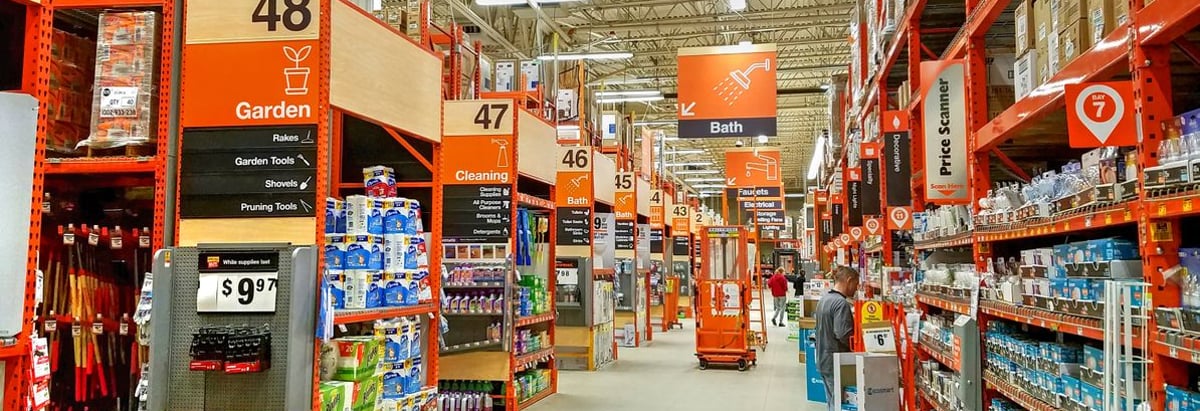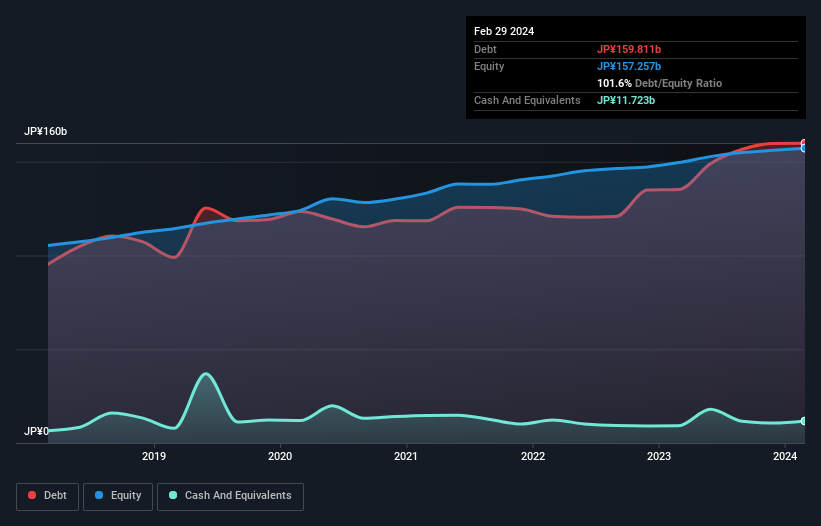
Some say volatility, rather than debt, is the best way to think about risk as an investor, but Warren Buffett famously said that 'Volatility is far from synonymous with risk.' So it seems the smart money knows that debt - which is usually involved in bankruptcies - is a very important factor, when you assess how risky a company is. We note that Kohnan Shoji Co., Ltd. (TSE:7516) does have debt on its balance sheet. But the more important question is: how much risk is that debt creating?
Why Does Debt Bring Risk?
Generally speaking, debt only becomes a real problem when a company can't easily pay it off, either by raising capital or with its own cash flow. If things get really bad, the lenders can take control of the business. However, a more usual (but still expensive) situation is where a company must dilute shareholders at a cheap share price simply to get debt under control. Of course, the upside of debt is that it often represents cheap capital, especially when it replaces dilution in a company with the ability to reinvest at high rates of return. The first thing to do when considering how much debt a business uses is to look at its cash and debt together.
View our latest analysis for Kohnan Shoji
What Is Kohnan Shoji's Net Debt?
You can click the graphic below for the historical numbers, but it shows that as of February 2024 Kohnan Shoji had JP¥159.8b of debt, an increase on JP¥135.2b, over one year. However, it also had JP¥11.7b in cash, and so its net debt is JP¥148.1b.

How Strong Is Kohnan Shoji's Balance Sheet?
We can see from the most recent balance sheet that Kohnan Shoji had liabilities of JP¥125.0b falling due within a year, and liabilities of JP¥176.3b due beyond that. Offsetting these obligations, it had cash of JP¥11.7b as well as receivables valued at JP¥15.8b due within 12 months. So its liabilities total JP¥273.8b more than the combination of its cash and short-term receivables.
This deficit casts a shadow over the JP¥136.9b company, like a colossus towering over mere mortals. So we definitely think shareholders need to watch this one closely. After all, Kohnan Shoji would likely require a major re-capitalisation if it had to pay its creditors today.
We measure a company's debt load relative to its earnings power by looking at its net debt divided by its earnings before interest, tax, depreciation, and amortization (EBITDA) and by calculating how easily its earnings before interest and tax (EBIT) cover its interest expense (interest cover). Thus we consider debt relative to earnings both with and without depreciation and amortization expenses.
Kohnan Shoji's net debt is 3.8 times its EBITDA, which is a significant but still reasonable amount of leverage. However, its interest coverage of 11.5 is very high, suggesting that the interest expense on the debt is currently quite low. We saw Kohnan Shoji grow its EBIT by 9.4% in the last twelve months. Whilst that hardly knocks our socks off it is a positive when it comes to debt. The balance sheet is clearly the area to focus on when you are analysing debt. But it is Kohnan Shoji's earnings that will influence how the balance sheet holds up in the future. So if you're keen to discover more about its earnings, it might be worth checking out this graph of its long term earnings trend.
Finally, while the tax-man may adore accounting profits, lenders only accept cold hard cash. So it's worth checking how much of that EBIT is backed by free cash flow. Considering the last three years, Kohnan Shoji actually recorded a cash outflow, overall. Debt is far more risky for companies with unreliable free cash flow, so shareholders should be hoping that the past expenditure will produce free cash flow in the future.
Our View
To be frank both Kohnan Shoji's conversion of EBIT to free cash flow and its track record of staying on top of its total liabilities make us rather uncomfortable with its debt levels. But at least it's pretty decent at covering its interest expense with its EBIT; that's encouraging. Overall, it seems to us that Kohnan Shoji's balance sheet is really quite a risk to the business. For this reason we're pretty cautious about the stock, and we think shareholders should keep a close eye on its liquidity. There's no doubt that we learn most about debt from the balance sheet. However, not all investment risk resides within the balance sheet - far from it. For instance, we've identified 2 warning signs for Kohnan Shoji (1 doesn't sit too well with us) you should be aware of.
If, after all that, you're more interested in a fast growing company with a rock-solid balance sheet, then check out our list of net cash growth stocks without delay.
Valuation is complex, but we're here to simplify it.
Discover if Kohnan Shoji might be undervalued or overvalued with our detailed analysis, featuring fair value estimates, potential risks, dividends, insider trades, and its financial condition.
Access Free AnalysisHave feedback on this article? Concerned about the content? Get in touch with us directly. Alternatively, email editorial-team (at) simplywallst.com.
This article by Simply Wall St is general in nature. We provide commentary based on historical data and analyst forecasts only using an unbiased methodology and our articles are not intended to be financial advice. It does not constitute a recommendation to buy or sell any stock, and does not take account of your objectives, or your financial situation. We aim to bring you long-term focused analysis driven by fundamental data. Note that our analysis may not factor in the latest price-sensitive company announcements or qualitative material. Simply Wall St has no position in any stocks mentioned.
About TSE:7516
Kohnan Shoji
Operates and manages a chain of home center stores that offer DIY products and household goods to general consumers and professionals in Japan.
Low and slightly overvalued.
Market Insights
Community Narratives



